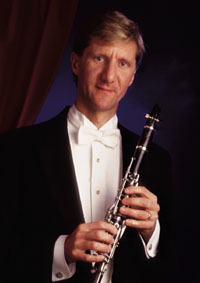Musicians are as reliant on their equipment as they are their arms and legs. Great equipment is half the battle to playing well. But the search is not so easy.
I’ve been trying out new mouthpieces for months now. Actually, I’ve been searching ever since I started playing clarinet. The perfect mouthpiece is an extension of your body, your musical soul. The more it matches you, the easier it is to make music with it. The less it matches, the more fighting you do just to get past its limitations.
The old mouthpieces from the 40’s and 50’s are still unmatched. Like the Stradivarius violins, there is something mystical about those old mouthpieces. Some say it’s the hard rubber they were made of, and how it’s aged and tempered over the decades of aging.
But the material only accounts for some of the qualities in a good mouthpiece. There are the interactions acoustically between the facing, where the reed vibrates, and the baffle, where the vibrations expand, and the chamber, where the sound is sent into the bore of the instrument.
The facing is the flat table where the reed is held by a ligature, a device to fix the reed in place. (Even the ligature has multiple designs to help with tone and response, but that’s another post) The facing consists mainly of the tip opening, which is the space between the tip of the reed and the mouthpiece. It’s where the vibrations (flapping of the reed) begin. The length of the facing is how far down the flat table the facing begins to curve away from the reed. The length of the facing gives depth to the sound, since the reed is vibrating further down. The shorter the facing, the more flexible it is at the expense of depth, and the longer it is, the less flexible but deeper it sounds.
The baffle is the inside, curved “beak”, where the sound expands into the bore. The swoop of the baffle, how deep or flat it is, affects the speed and expansion of the tone. It also affects response in articulation.
The chamber is the transition from the beak to the round bore of the clarinet. The size and shape of this transition further affects how the sound forms as it enters the instrument.
Each of these areas interacts with another, and so is dependent on the others. One type of baffle may work with one facing, but not another. One chamber may hinder a deep baffle, but not if the facing is very open.
Then there is the interaction between the player and the mouthpiece. Each mouthpiece has a certain character. The craftsman does his best to make each “blank” into the best mouthpiece it can be. The player then chooses between these various “works” and finds the one which best matches his playing.
Reeds are another maddening variable. One mouthpiece may work well with one reed, but may be fussy about reeds in general. So when trying mouthpieces, I have to try many different reeds on them over a period of time to test its consistency. I also need to test mouthpieces in the context of the orchestra to see how the pitch settles and how the response and tone work under pressure.
The process of trying mouthpieces can take years. At some point, a sane person needs to just put away all but one and work with it, get reeds to match it, and give it time to become and extension of the body which plays the music.




